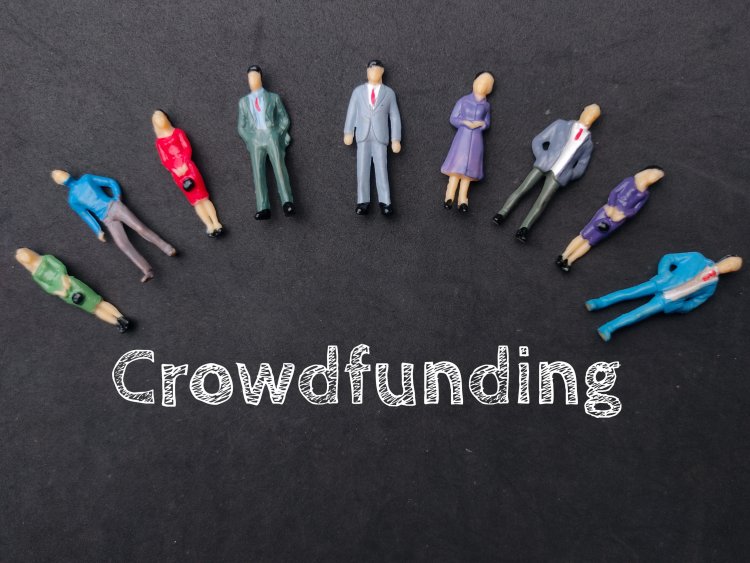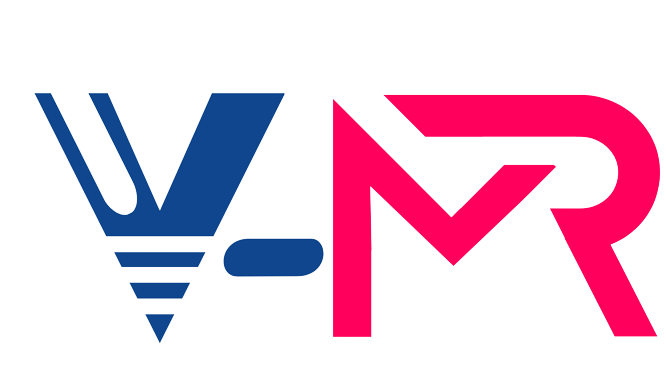What is Crowdfunding? How to Run a Successful Campaign?
Explore the concept, benefits, and various strategies to run a successful crowdfunding campaign for startups and innovative projects. Delve into real-world examples and gain insights into navigating the world of crowdfunding effectively.

What is Crowdfunding?
The emergence of crowdfunding has given the conventional methods of funding a new dimension in a world where invention and creativity have no limitations. By utilizing the power of group cooperation, this modern technique of financing has fundamentally changed how ideas, initiatives, and ventures are brought to life. But what is crowdfunding exactly?
Fundamentally, crowdfunding is a method that enables individuals, business owners, and organizations to solicit financial support for their endeavors from a wide range of people. The idea behind it is to combine many people's very little contributions, which is frequently made possible via internet platforms. These platforms act as online gathering places where creators can introduce their concepts, gripping stories, and goals to potential supporters who are eager to fund initiatives that speak to them.
The inclusivity of crowdfunding is one of its fundamental features. Crowdfunding provides opportunities for nearly anyone with a great concept, unlike traditional fundraising channels that may demand connections or significant upfront funds. Even the most outlandish initiatives can be realized because to the democratization of the process. Crowdfunding gives creators a platform to connect with a large audience that transcends geographical boundaries, whether it be for a tech innovation, an independent film, a social cause, or a creative product.
Crowdfunding comes in a variety of forms, each serving certain objectives and requirements. People who participate in donation-based crowdfunding do so without expecting financial rewards. This model frequently backs humanitarian activities, relief operations for natural disasters, and neighborhood projects. On the other hand, reward-based crowdfunding provides contributors with a concrete incentive in exchange for their monetary assistance. Receiving the actual product as it is being developed or getting access to exclusive goods or experiences are just a few examples.
Equity crowdfunding adds a more investment-focused perspective. According to this concept, contributors become into project stakeholders who share possible risks and benefits as the initiative develops. This style of crowdfunding has become quite popular among startups and business owners since it gives backers the option to participate in the enterprise and possibly profit financially if it is successful.
Another type of crowdfunding is peer-to-peer lending, which focuses on giving loans to people or businesses at rates that are frequently lower than those of established lenders. Bypassing the financial intermediaries, this strategy links lenders and borrowers directly.
The key to crowdfunding's success is not just how much money it can raise, but also how well it can unite people behind a common cause. In addition to providing financial support, backers also act as champions and enthusiasts, fostering word-of-mouth advertising and building a network that goes beyond the funding campaign. The designers frequently feel more accountable as a result of this community-driven strategy since they are more motivated to keep their word and uphold transparency.
Get a Free Sample Report on the Crowdfunding Market: https://www.vantagemarketresearch.com/industry-report/crowdfunding-market-1484
How Crowdfunding Works?
Increasingly popular in recent years, crowdfunding provides a creative approach for individuals, small businesses, and established organizations to raise money for their endeavors. Crowdfunding is fundamentally a cooperative strategy that mobilizes the combined financial resources of a wide range of people, frequently assisted through internet platforms. But first, let's explore the details of how this intriguing idea actually operates.
A project initiator or creator with a strong idea starts the process. This concept might involve ground-breaking technological advancements, creative pursuits, social initiatives, or business endeavors. The initial step for the creator is to select an appropriate crowdfunding site.
After deciding on a platform, the developer starts by developing a compelling campaign pitch. The project's goals, relevance, and possible influence are all presented in this pitch, which is more than simply a simple explanation. The effectiveness of the pitch is increased by adding multimedia components like movies, photos, and thorough explanations, which captivate potential backers.
Setting a funding target is an essential component of crowdfunding. The financing goal denotes the precise sum of money the project's author hopes to raise. This sum is meticulously calculated, accounting for a range of costs including those related to production, marketing, and other related charges. The objective must be obvious and made known to potential supporters.
Tiers of rewards are yet another brilliant aspect of crowdsourcing. Creators of prize-based crowdfunding campaigns specify various award tiers, each of which is connected to a certain donation amount. Depending on their financial capacity, backers, or people interested in supporting the project, can select a tier. These tiers provide a variety of rewards, such as limited-edition products, unique early access to the finished product, and even one-on-one meetings with the artist.
The campaign is formally launched on the selected platform once the campaign pitch, funding target, and incentive tiers have been determined. The crowdfunding campaign has officially started, during which time backers can find the project and contribute from all around the internet. The use of social media, personal networks, and word-of-mouth are essential for increasing the campaign's visibility and luring new supporters.
Interested backers browse the campaign and provide money in accordance with the reward tiers they want. Depending on the supporter's enthusiasm for the project, these donations may be as small as a few dollars or much larger. As the campaign develops traction, the total amount raised starts to build up and gradually approaches the initial financing target.
A campaign is deemed successful if it successfully reaches or exceeds its funding target by the campaign's end date. The creator can now start working on the project after receiving the money that have been raised. This entails putting the concept into practice, whether it is through the production of a good or service, the creation of content, or both.
Throughout the procedure, communication is still the key component. In order to keep funders aware of project milestones, difficulties, and advancements, creators routinely provide updates. The participation and passion of the backers must be sustained, and this transparency generates a sense of trust and community.
Creators fulfill their commitments by giving rewards to their backers after the project is finished and the promised goods are prepared. In order to ensure that people who backed the project receive their incentives as a sign of gratitude for their participation, this stage deepens the relationship between creators and backers.
How to Run a Crowdfunding Campaign?

- Improve Your Idea: Begin by fine-tuning your project concept. Clearly state its objective, distinctiveness, and potential effects. Your idea should appeal to your target audience whether you're launching a new product, a creative project, or supporting a cause.
- Select the Appropriate Platform: Choosing the correct crowdfunding platform is essential. Every crowdfunding website, including GoFundMe, Indiegogo, and Kickstarter, has a different target and set of features. Find the platform that best suits the nature and objectives of your project by researching these options.
- Organize Your Campaign: Create a thorough plan that explains all the components of your campaign. Define your financial objective; it should include all necessary expenses, including those for manufacturing, marketing, and fulfillment. Determine the campaign's duration as well, taking into account the time required to gain momentum and gather supporters.
- Create a Strong Campaign Pitch: The core of your effort is your campaign pitch. Create a compelling narrative that introduces your project, clarifies its importance, and appeals to potential funders' emotions. Infographics, movies, and other visual components can improve the impact of your pitch.
- Establish Reward Tiers: In reward-based crowdfunding, alluring benefits encourage contributors to make a contribution. Create many incentive tiers that offer a range of benefits, from exclusive access to the product to specialized experiences. Make sure the incentives correspond to the contributions.
- Create attractive Content: A campaign needs a continual supply of compelling content to be successful. Prepare a series of blogs, updates, and visuals before the campaign launches so that interest may be maintained. This information need to be insightful, update funders on developments, and foster a close relationship.
- Launch Effectively: The launch day is crucial. Make your campaign pitch and distribute it via email, social media, and personal networks. A successful start can build momentum quickly and draw in the first backers, creating an upbeat atmosphere for the campaign's duration.
- Promote Community Engagement: Actively interact with your supporters and potential backers. Answer questions, mails, and comments as soon as possible. Your campaign's legitimacy is increased by creating a sense of community and interaction, which motivates supporters to spread the news.
- Use Social Media: Social media sites are a crucial tool for promoting your campaign. Share updates, behind-the-scenes material, and supporter testimonials on a regular basis. Make use of hashtags and promote sharing to broaden the reach of your campaign.
- Maintain Momentum: Continually add new content to your campaign, highlighting achievements and any media attention you receive. "Surges" in the middle of a campaign can revive enthusiasm and draw in new supporters.
- Overcome Obstacles: Obstacles can appear out of nowhere throughout a campaign. Keep your supporters informed of any obstacles you may be facing, along with the actions you are taking to resolve them. Trust is cultivated via open communication.
- Finish Strong: Step up your efforts to mobilize supporters as your campaign nears its conclusion. To boost last-minute donations and foster a sense of urgency, provide limited-time incentives.
- Keep Your Promises: After your campaign meets its financial target, turn your attention to keeping your promises. Keep backers updated on schedules and development. Payouts should be fast and of the advertised quality.
- Show Appreciation: After the campaign is over, show your supporters how much you appreciate their support. They were crucial in making your endeavor a success. Even after the campaign is over, regular updates on the project's status can solidify the relationship.
Explore Our Latest Blog Post: DroneBrella (Self-Flying Umbrella): How Technolgy is Changing the Game?
Crowdfunding Campaign Examples

- The Coolest Cooler: This advertising campaign elevated the concept of a cooler to an all new level. The Coolest Cooler turned the ordinary cooler into the life of the party with built-in Bluetooth speakers, a blender, and even a USB charger. The key to this campaign's success is its capacity to meet the needs of outdoor enthusiasts while providing a distinctive and versatile product. Over $13 million was raised on Kickstarter thanks to the campaign video's successful production and the artists' captivating narration.
- Expanding Kittens: An instant hit on Kickstarter, Exploding Kittens is a card game that blends strategy, chance, and a generous dose of silliness. The campaign's funny and eccentric humor, which was created by The Oatmeal's Matthew Inman and game creators Elan Lee and Shane Small, was well received by backers. Even oddball prizes like personalized doodles and even a cuddly "Taco Cat" were available from the developers. They exceeded their initial $10,000 goal by raising an astounding $8.8 million.
- Pebble Time: Pebble Time is a standout in the world of wearable technology because to its e-paper display, svelte design, and long battery life. The way this Kickstarter campaign involved its existing community set it apart from other campaigns. Pebble had already funded a version with great success, and they used their devoted user base to spread the word. They raised almost $20 million in addition to their funding target thanks to their campaign film that highlighted the watch's capabilities and personalization choices.
- Potato Salad: Occasionally, the most outlandish concepts attract the greatest attention. The ironic potato salad Kickstarter campaign started by Zack Brown became a worldwide sensation. People connected with the campaign's simplicity and comedy, which resulted in an unexpected $55,000 in funding. It may not have been a conventional undertaking, but it demonstrated the strength of a relatable and entertaining idea.
- Oculus Rift: Before being purchased by Facebook, the virtual reality headset from Oculus Rift set a new standard for crowdfunding success. With immersive VR experiences, the designers hoped to completely transform the gaming and entertainment industries. Both gamers and tech fans found their campaign compelling, and it succeeded in raising approximately $2.5 million on Kickstarter. Virtual reality technology underwent a paradigm shift with the Oculus Rift's eventual commercial success.
How Many Crowdfunding Campaigns Fail?
However, beyond the gloss and glamour of successful campaigns, there's a harsh reality: not all crowdfunding projects succeed. The question "How many crowdfunding campaigns fail?" is one that is on many people's minds. Exploring this question reveals a complex reality where pragmatism clashes with passion, creativity clashes with obstacles, and expectations battle disappointments.
- The Diverse Spectrum of Crowdfunding
In order to pitch their ideas to a worldwide audience, innovators, artists, and entrepreneurs can now use crowdfunding platforms, ushering in a new era of democratized funding. The options range from Indiegogo to Kickstarter. While success stories frequently make the news, the route is frequently perilous. Industry statistics show that about 60% of crowdfunding initiatives fall short of their financing targets. This number begs the question of what factors, among many, contribute to the seemingly high failure rate.
- The Role of Presentation and Communication
How well the project is presented is one of the key elements affecting how a crowdfunding campaign turns out. Potential backers are more prone to pay attention to and trust creators who have mastered the art of storytelling, captivating graphics, and compelling videos. Missed opportunities result from campaigns that struggle to properly communicate their vision due to unclear descriptions or low-quality media. Consequently, it is essential to pay close attention to presentation and communicate clearly.
- Market Research and Target Audience
Understanding the target audience is crucial in the virtual world of crowdfunding. Lack of sufficient market research is a common cause of failed campaigns. Entrepreneurs who are unable to recognize their niche or gauge the demand for their offering frequently end up getting lost in the crowd. To avoid campaigns fading into obscurity, it is crucial to have a thorough awareness of the competition and a strategic plan to stand out.
- The Funding Goal Conundrum
A crowdfunding campaign's success depends on striking the correct balance when choosing the appropriate funding target. Overly ambitious objectives may turn away potential funders, while underestimating the amount of money needed may cause a project to fail even if it meets its objective. Transparent budget breakdowns that include manufacturing, marketing, and distribution expenditures help reassure donors that their donations will be used wisely and inspire confidence in them.
- Navigating the Sea of External Factors
While careful planning is necessary, other elements can also have a big impact on the outcome of a campaign. Economic downturns, unforeseen technical hiccups, or even major global calamities like pandemics could have an influence. Having the ability to adjust to unforeseen situations and displaying resilience can occasionally mean the difference between a successful and unsuccessful campaign.


















